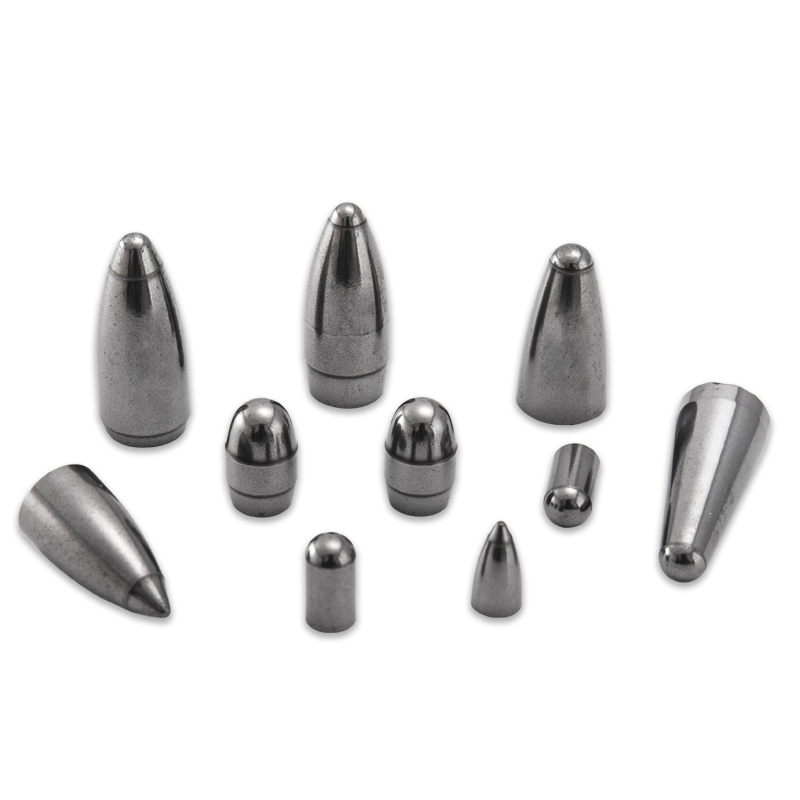The Unyielding Precision of Tungsten Carbide Cutting Blades
Industry News-Tungsten carbide is a composite material composed of tungsten and carbon atoms bonded together in a crystalline structure. It’s known for its incredible hardness—second only to diamond—and its resistance to abrasion and heat. In fact, tungsten carbide is so hard that it cannot be cut or shaped with conventional tools; instead, it must be ground or machined using specialized equipment like diamond-tipped tools. This hardness makes it ideal for cutting blades that need to maintain their edge over long periods of use.
The material is also extremely dense, which gives it another valuable property: weight. A tungsten carbide blade feels substantial in the hand, providing stability and control during cutting operations. This density is particularly beneficial when working with tough materials like steel, stone, or composites, where precision and force are both required.
Why Choose Tungsten Carbide Cutting Blades?
One of the primary reasons tungsten carbide cutting blades are favored in demanding environments is their longevity. Unlike traditional steel blades, which dull quickly under heavy use, tungsten carbide blades retain their sharpness far longer. This means fewer interruptions for blade changes or sharpening, leading to increased productivity and reduced downtime.
Another advantage is their ability to withstand high temperatures without degrading. Many cutting processes generate significant heat due to friction, but tungsten carbide remains stable even at elevated temperatures. This makes it suitable for high-speed machining and other applications where thermal stress could compromise lesser materials.
In addition to their durability, tungsten carbide blades offer superior edge retention. The fine grain structure of the material allows manufacturers to create extremely sharp edges that hold up well against abrasive materials. Whether slicing through hardwoods, laminates, or reinforced plastics, these blades deliver clean cuts with minimal effort.
Applications of Tungsten Carbide Cutting Blades
The versatility of tungsten carbide cutting blades ensures their use across a wide range of industries. In woodworking, they are prized for their ability to cleanly cut intricate patterns and profiles without splintering or chipping the material. For metalworking shops, these blades excel in cutting hardened steel, stainless steel, and titanium alloys, where softer metals would fail prematurely.
Stone and masonry work also benefit greatly from tungsten carbide technology. From quarrying natural stone to shaping granite countertops, these blades provide consistent performance even when faced with some of the toughest substances on Earth. Similarly, in the aerospace and automotive sectors, where precision machining of exotic materials is critical, tungsten carbide blades ensure accurate results time after time.
Even in more niche fields such as medical device manufacturing or electronics assembly, tungsten carbide cutting tools play a vital role. Their ability to produce ultra-fine cuts with exact tolerances makes them invaluable for crafting delicate components that require absolute precision.

Maintenance and Care
While tungsten carbide cutting blades are incredibly durable, they still require proper care to maximize their lifespan. Regular cleaning is essential, especially after cutting materials that leave behind resin, pitch, or metallic shavings. These residues can build up on the blade surface and affect its performance over time.
It's also important to match the blade type to the specific task at hand. Using a blade designed for wood to cut metal—or vice versa—can lead to premature wear or damage. Additionally, while tungsten carbide blades resist dulling better than most, they aren’t indestructible. Periodic inspection for chips or cracks will help prevent accidents and ensure optimal performance.
Sustainability Considerations
As industries increasingly focus on sustainability, the environmental impact of tool materials comes into play. Tungsten carbide itself is recyclable, and many manufacturers now offer programs to reclaim worn-out tools for reuse. By choosing tungsten carbide cutting blades, businesses can reduce waste and contribute to a circular economy, provided they partner with responsible suppliers who prioritize recycling initiatives.
Moreover, because tungsten carbide blades last longer than alternatives, they inherently reduce resource consumption by minimizing the frequency of replacements. Fewer blades mean less raw material extraction and energy expenditure in production—a small but meaningful step toward greener practices.


 English
English русский
русский





